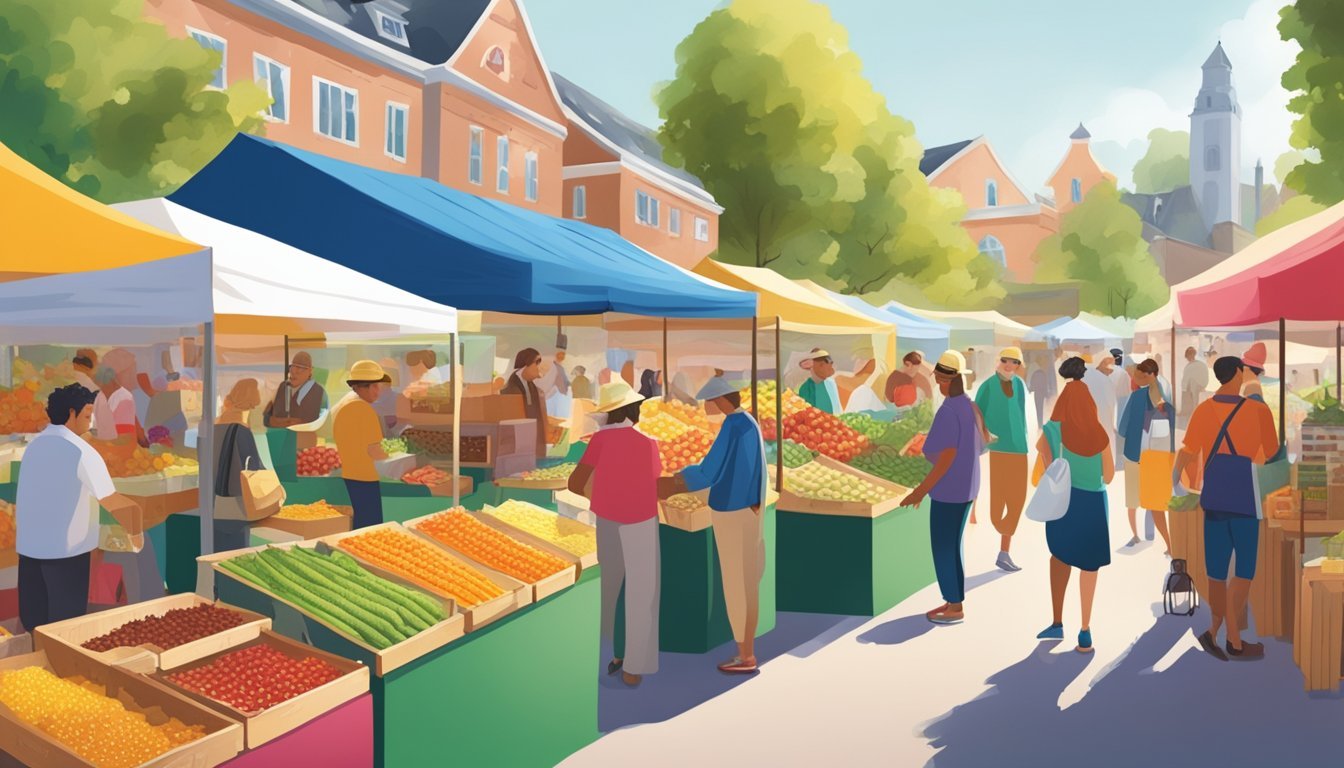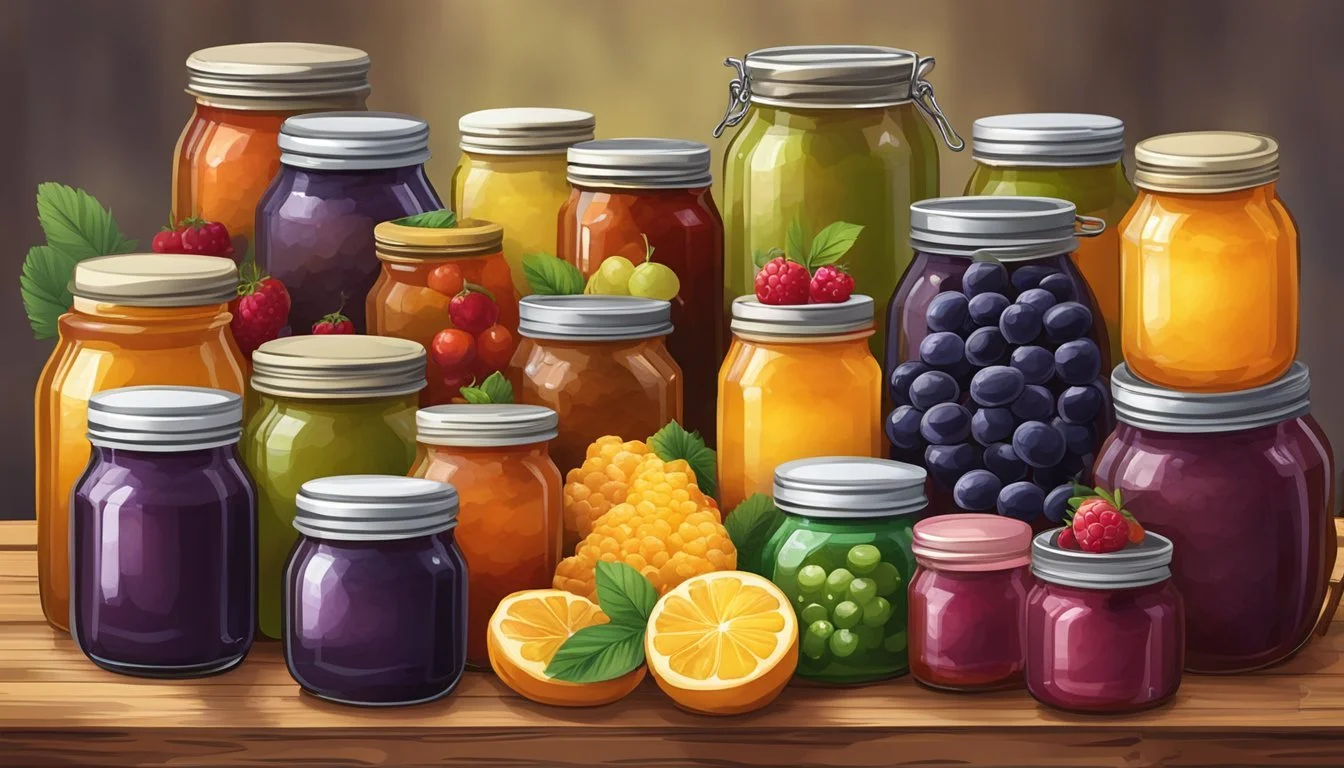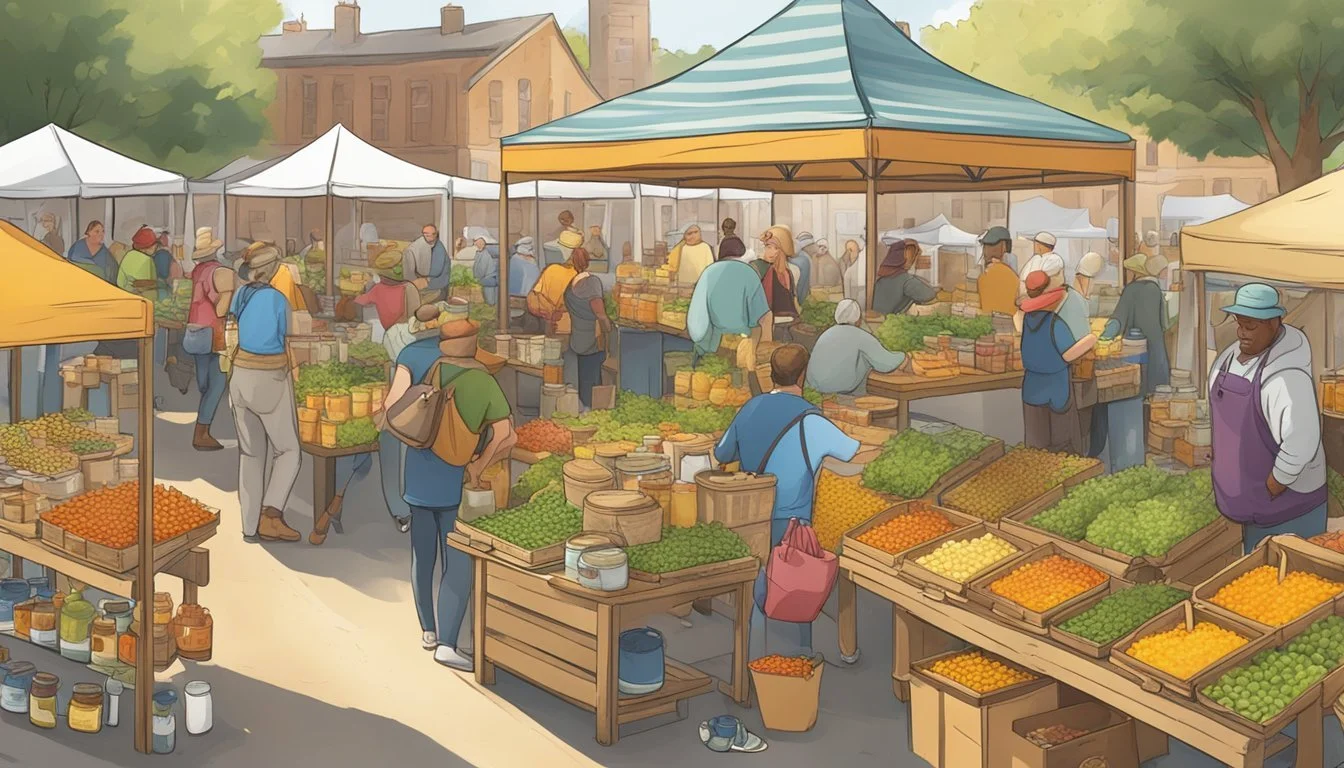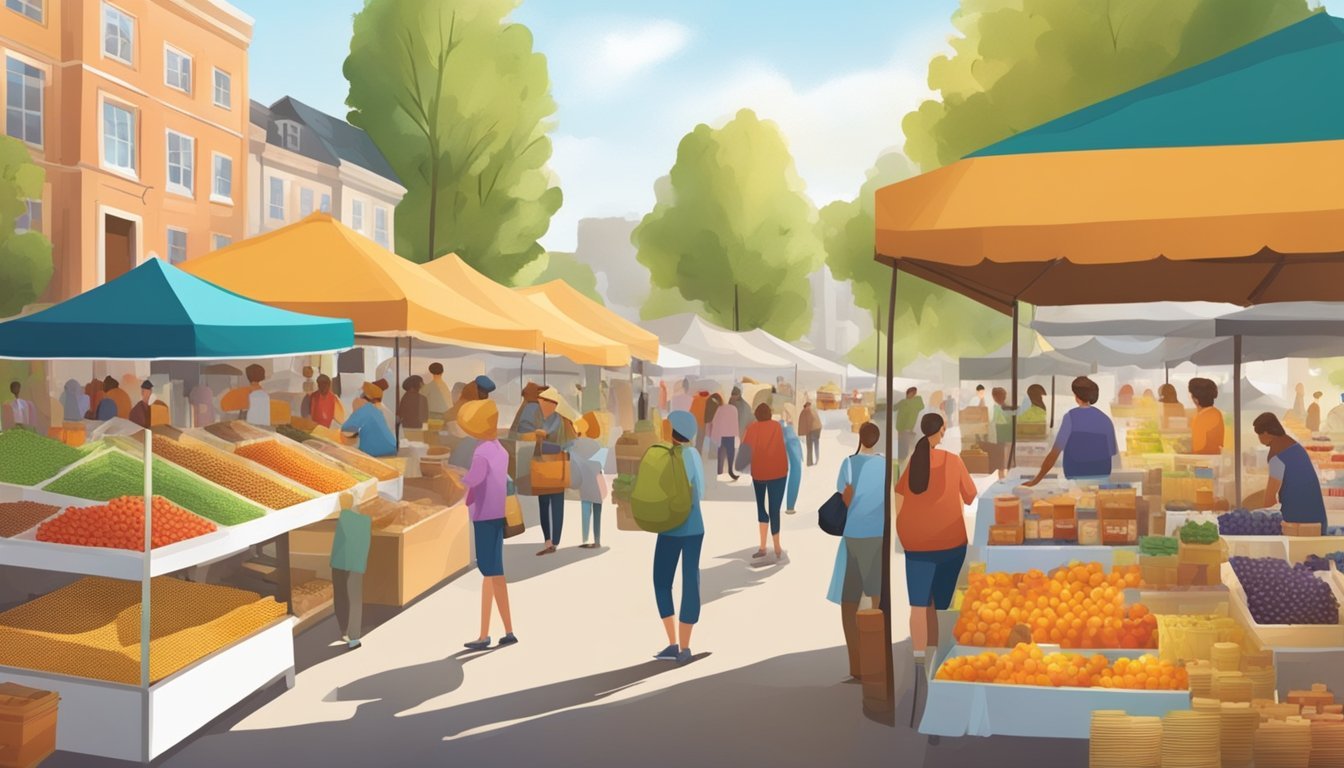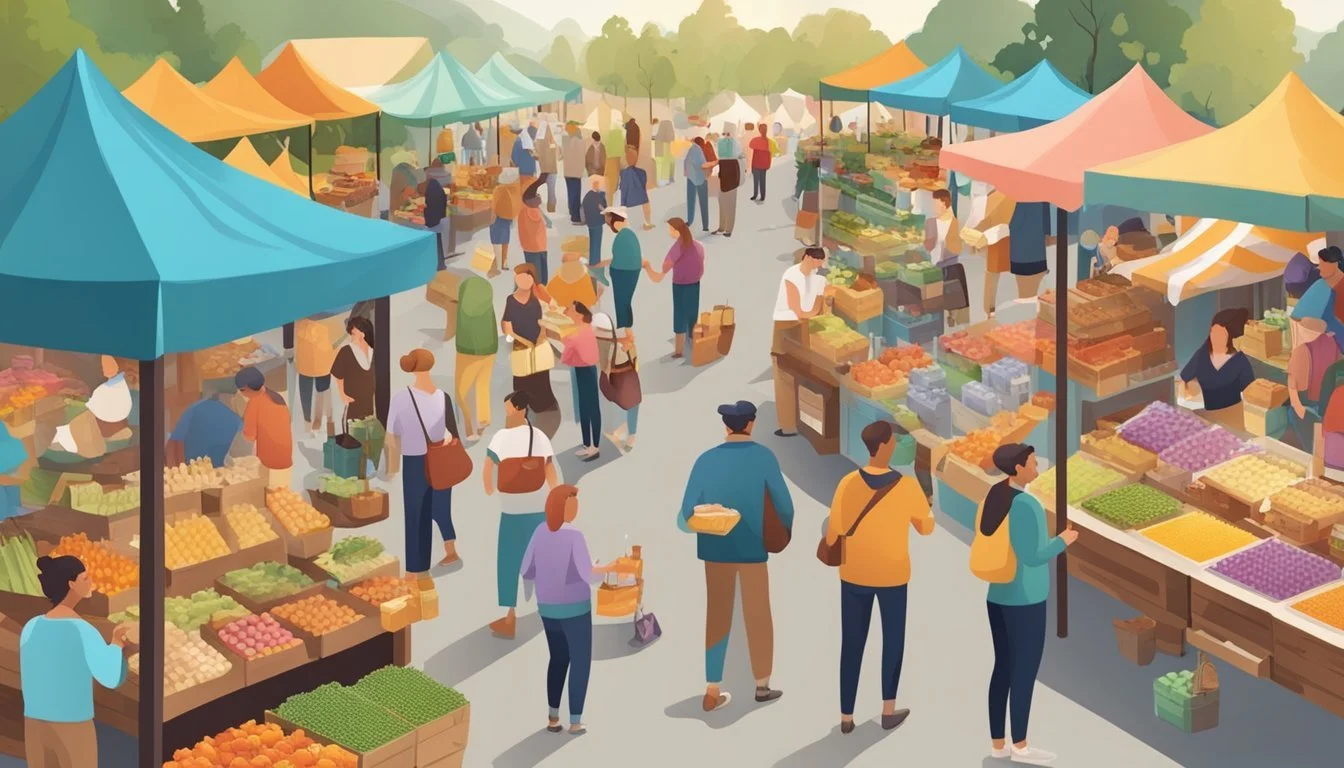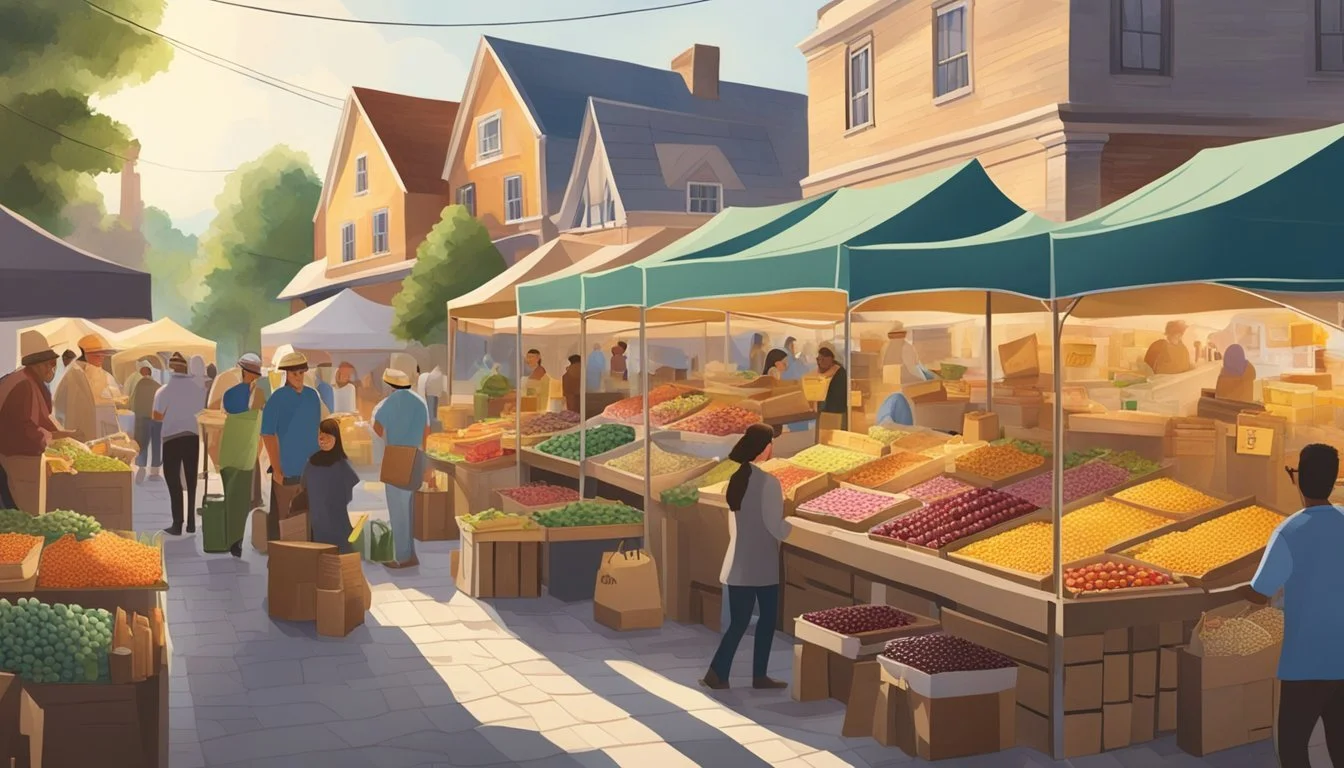The Sweet Side of the Farmers' Market
Unveiling the Best Local Honey and Jams
Venturing into a farmers' market is a sensory experience that brings one closer to the local land and its seasonal bounty. Among the vibrant stalls bursting with fresh produce, there's a sweeter realm worth exploring: the local honey and jams. Cultivated with care by local artisans, these products represent the essence of their geographic region, encapsulating the unique flavors fostered by local flora and climate. Honey (What wine goes well with honey?), in its purest form, varies from one locale to another, influenced by the flowers and plants visited by the bees, while homemade jams transform fresh, ripe fruits into delectable spreads that preserve the taste of the seasons.
Patrons of farmers' markets often seek out not just freshness but also quality and traceability in their purchases. Local honey and jams provide just that, with the added benefit of supporting small-scale beekeepers and fruit farmers. Consumers who indulge in these sweet offerings not only enjoy a superior product but also contribute to the sustainability of local agriculture and the preservation of traditional food-making practices. In this respect, purchasing locally produced honey and jams is a conscious choice that benefits both the palate and the community.
At the heart of the attraction to farmers' market honey and jams is the guarantee of authenticity. Small batches ensure attention to detail, and the absence of unnecessary additives or preservatives elevates the nutritional profile. With each spoonful of jam or drizzle of honey, consumers are invited to savor a piece of the local terroir, knowing that they are directly supporting the hardworking individuals dedicated to natural and sustainable food production.
Exploring the Farmers' Market
Farmers' markets are vibrant hubs where the community comes together to access a variety of fresh produce, artisanal foods, and local specialties such as honey and jams. These markets serve as a bridge between urban consumers and rural farmers, offering a rich history along with a diverse selection of goods that extend well beyond fruits and vegetables.
History and Significance
Farmers' markets have deep roots in American history, dating back to when farmers would bring their produce to town squares to sell directly to consumers. This direct selling method supports small-scale farmers and contributes to the local economy. Many markets often run by county or community organizations, have grown to become integral parts of the local food scene, presenting a wide array of locally-sourced items including meat, eggs, flowers, and even non-food items like handmade crafts.
San Rafael, Marin County, hosts a notable market dating back to 1987.
Markets often feature live entertainment, like music, adding to the communal experience.
Diverse Offerings Beyond Produce
While fruits and vegetables remain the staples of any farmers' market, these gatherings offer an abundance of other products:
Artisanal Foods:
Freshly baked pie
Home-made salsa
Natural maple syrup
Specialty Items:
Variety of spices for cooking
Local honey, proudly harvested by regional beekeepers
Hand-crafted jams and preserves
In the midst of the bustle, visitors also enjoy experiences like live music and cooking demonstrations, which turn shopping from a chore into a delightful community outing. Whether one is searching for ingredients for the week's meals, a unique gift, or simply a leisurely stroll amongst colorful stalls, farmers' markets provide a space where the public can connect with the source of their sustenance on a personal level.
The Lure of Local Honey
The farmers' market offers a treasure trove of local honey, each variety boasting unique flavors and benefits. Shoppers often seek out these golden offerings for their distinctive taste and commitment to sustainability.
Benefits of Local Honey
Local Honey is celebrated for its potential health advantages and contributions to regional ecosystems. It is believed to be beneficial in:
Alleviating Allergies: Utilizing local ingredients, local honey contains pollen from the area. Small doses may help build immunity to local allergens.
Natural Sweetener: A superior alternative to processed sugars, it adds a rich depth of flavor to food.
Nutritional Profile: It includes antioxidants, vitamins, and minerals.
Beekeeping and Sustainability
Beekeeping practices for producing local honey are often mindful of environmental impacts. Sustainable methods include:
Avoidance of Chemicals: Responsible beekeepers typically limit or abstain from using harmful herbicides and pesticides, promoting healthier hives and cleaner honey.
Water Conservation: They may also implement water-saving techniques to benefit local water resources.
Sustainability extends to supporting local economies and reducing carbon footprints due to shorter transport distances for local honey.
Honey Varietals and Uses
A diverse range of honey varietals exists due to different bees and local flora. This diversity translates into a spectrum of uses:
Culinary Versatility: From sweetening teas to flavoring marinades, its uses in food preparation are vast.
Varietal Suggested Use Clover Teas, dressings Buckwheat Baking, sauces
Medicinal Purposes: Known for its antimicrobial properties, it can be used in homemade remedies.
Each varietal is a testament to the unique nectar sources and the meticulous labor of beekeepers who provide this sustainable resource.
A Palette of Jams and Preserves
The farmers' markets are bustling with varied jams and preserves, each offering a unique taste experience. They harness the essence of fresh, local fruits, ranging from strawberries and peaches to apples and blueberries.
Jam-Making Process
The jam-making process begins with selecting high-quality, ripe fruits. Strawberries and peaches are common choices due to their rich flavor and pectin content, which aids in thickening. These fruits are then cleaned, cut, and simmered with sugar until they reach the desired consistency. Artisans may incorporate pectin or lemon juice to balance sweetness and to help the jam set.
Types of Jams and Flavors
Farmers' markets offer a spectrum of jam varieties, each with its distinct range of flavors. Some popular options include:
Strawberry Jam: A classic favorite, marked by its bright, sweet taste.
Peach Preserves: Chunky and full-bodied, often with a hint of spice.
Apple Butter: A thicker, spiced spread that's slow-cooked to caramelized perfection.
Elderberry Syrup: Rich and dark, used both as a condiment and for its medicinal properties.
Applesauce: A versatile preserve that’s sweet or tart, depending on the apple variety used.
Blueberry Jam: Deep, berry flavors with a balance of sweetness and tang.
Pairing Jams with Food
Choosing the right jam to complement food can enhance any meal. Here are some exemplary pairings:
Jam Type Pairing Suggestion Strawberry Jam Ideal with scones, toast, or classic peanut butter and jelly sandwiches. Peach Preserves Pairs well with soft cheeses or as a glaze for pork. Apple Butter Delicious with oatmeal, yogurt, or on warm, fresh bread. Blueberry Jam Excellent on pancakes or swirled into cakes for a burst of fruitiness.
Each pairing leverages the jam's flavor profile, bringing a simple yet sophisticated twist to everyday dishes.
Supporting Local Business and Economy
Farmers' markets serve as crucial platforms for local businesses, particularly small-scale beekeepers and jam producers, allowing them to thrive and contribute significantly to the local economy.
The Role of Small Businesses in Farmers' Markets
Small businesses are the backbone of farmers' markets. They often include family-owned operations that generate a variety of local produce including honey and jams. Beekeepers and jam producers showcase their goods directly to consumers here, fostering a connection between local farmers and the community. This transparency allows customers to learn where their food comes from and how it is made, increasing trust and loyalty toward local vendors.
Local Beekeepers: They harness regional floral diversity, selling unique local honey varieties.
Jam Producers: They transform local fruits into an array of flavorful jams, often using recipes that highlight the region's character.
Impact on Local Economy
Farmers' markets have a tangible impact on the local economy. When consumers purchase honey and jams directly from small businesses at these markets, a greater share of their spending stays in the local community. For example, farmers who sell directly to consumers at farmers' markets can retain a significantly larger portion of each food dollar, unlike the small percentage that reaches farmers through traditional retail channels. This direct revenue helps sustain the agricultural community and bolsters the local economy through:
Sales Tax Contributions: Transactions at farmers' markets contribute to local sales tax, which is later invested in community services.
Local Business Growth: Increased earnings help small businesses to expand and employ local workers.
By supporting farmers and small businesses at the local farmers' market, consumers play a crucial role in nurturing a robust local economy that benefits the entire community.
Events and Community Activities
Farmers' markets often extend beyond the sale of local honey and jams, intertwining community activities and seasonal events to enhance the customer experience. They become hubs where culture, education, and entertainment meet the sweetness of locally produced goods.
Seasonal Events
Vail Farmers' Market & Art Show: This event marries the charm of mountain life with the sweetness of local produce. Visitors can not only sample a variety of local honeys and jams but also enjoy live music that echoes through the streets of Vail. Seasonal festivities may include a corn maze in autumn, appealing to those who love both adventure and artisanal food.
Central Park Events: In a setting as iconic as Central Park, farmers' markets can transform the scenery with their seasonal celebrations. During the fall, it's not uncommon to find a pumpkin patch where farmers' market attendees can pick their own pumpkins amid the sounds of live music and the sights of food trucks offering autumnal treats.
Community Involvement and Education
Farmers' markets serve as platforms for education and community involvement. They frequently host workshops on the benefits of local honey and the art of jam-making. Events like these engage the community and foster a deeper connection with local producers, emphasizing the importance of sustainable practices. Additionally, some markets team up with local musicians to provide live music, creating an inviting atmosphere that encourages community members to gather, learn, and enjoy the fruits of their local farmers' labors.
Innovative Payment Options and Food Access
Farmers' markets are increasingly adopting advanced payment systems to improve food access. These innovative solutions aim to bridge gaps in food availability, affordability, and convenience.
Alternative Payment Methods
Farmers' markets now cater to the tech-savvy customer by accepting alternative payment methods such as credit cards, debit cards, and mobile payment apps like Apple Pay. This move is a response to the growing number of consumers who prefer cashless transactions for their speed and convenience. Implementation of Electronic Benefit Transfer (EBT) systems at these locales is also gaining traction.
Supported Alternative Payments:
Credit/Debit Cards
Apple Pay
Electronic Benefit Transfer (EBT)
By offering these payment options, markets are not just easing the shopping experience but also ensuring everyone has the chance to purchase quality local honey and jams without the constraint of needing cash on hand.
Nutrition Assistance Programs
Farmers' markets are integral to dietary health in local communities, especially when they support nutrition assistance programs. One such program, the Electronic Benefits Transfer (EBT) allows for the electronic processing of benefits from programs such as the Supplemental Nutrition Assistance Program (SNAP). Additionally, some markets can process payments through the eWIC system, which provides nutritional support to women, infants, and children.
Assistance Programs Accepted:
SNAP (Supplemental Nutrition Assistance Program)
eWIC (Women, Infants, and Children)
By integrating these programs, farmers' markets make nutritious products like local honey and jams more accessible to a diverse customer base, therefore, playing a crucial role in promoting community nutrition and dietary health.
Health and Nutrition
Farmers' markets are hubs for nutrient-rich produce, including a variety of sweet potatoes, and local specialties like fresh honey and homemade jams. These markets support better health through their fresh, locally grown food offerings, which include organic and non-GMO options that cater to health-conscious consumers, including those following a gluten-free diet.
Nutritional Benefits of Farmers' Market Products
One of the primary health benefits of products from farmers' markets is their high nutritional value. Produce like sweet potatoes are sold at these markets, providing essential vitamins and minerals. Sweet potatoes are notably rich in vitamin A, vitamin C, and manganese. Local honey from produce vendors also offers health advantages. Unlike processed honey, local honey retains more of its natural nutrients and antioxidants due to minimal processing.
Local jams made from freshly picked fruits contain higher levels of vitamins compared to commercially produced versions which often have added preservatives. These products also offer a flavorful way to enjoy fruits that might otherwise be less accessible due to off-season or rarity in commercial outlets.
Nutrient-Rich Foods Benefits Sweet Potatoes High in fiber, vitamin A, vitamin C Local Honey Natural antioxidants, trace enzymes Homemade Jams Fruit nutrients, no preservatives
Organic and Non-GMO Options
Farmers' markets often feature organic and non-GMO products, which appeal to consumers who are mindful of their food's origins and how it is grown. Organic produce vendors at farmers' markets ensure their fruits and vegetables are grown without synthetic pesticides and fertilizers, which can be better for one's health and the environment. Non-GMO products maintain the natural genetic composition of the food, which some consumers prefer for health and ethical reasons.
Gluten-free options are also prevalent at farmers' markets, catering to those with celiac disease or gluten sensitivities. Vendors that specialize in gluten-free products often use alternative ingredients like almond flour or coconut flour in their homemade jams, which adds to the health benefits and broadens the appeal for diverse dietary needs.
Offering freshly harvested, less processed food, farmers' markets provide produce that typically contains more nutrients and fewer additives, making them a favorable choice for health-conscious shoppers.
Local Specialties and Seasonal Finds
Farmers' markets are a treasure trove of unique local products and a showcase for the best of seasonal produce. Visitors can expect a diverse array of items bred from local tradition and agricultural strengths.
Unique Local Products
At the heart of any farmers' market, one can find a selection of unique local products that reflect the agricultural identity of the region. In the case of honey, markets like those in Portage County highlight vendors such as Kline Honey Bee Farm, offering a selection of delicious local honey. These products are often harvested from the surrounding oak-rich areas, infusing the honey with distinct regional flavors.
In addition to sweet syrups and honey, customers may also stumble upon a variety of handcrafted candles, often made using local beeswax. These candles not only bring a warm glow to homes but also carry the subtle scents of the region's flora. Spices and prepared foods, reflecting the local palate, provide a culinary adventure for visitors. For example, markets in areas like Lebanon would present a different set of spices and prepared food options, characteristic to that locale.
Seasonal Produce Highlights
Each season brings its own highlights to the farmers' market. Seasonal produce offers a snapshot of what is currently flourishing in the local fields. Especially during the summer months, markets boast an abundance of sweet corn, a staple that's both locally grown and eagerly anticipated by patrons for its freshness and flavor.
A farmers' market in full swing will host a variety of locally grown fruits and vegetables. These items not only underline the importance of eating seasonally but also guarantee the finest quality. To illustrate the seasonal variety, consider:
Spring: Tender greens, asparagus, and fresh herbs
Summer: Berries, stone fruits, and vine-ripened tomatoes
Fall: Pumpkins, root vegetables, and apples
Winter: Citrus fruits, winter squashes, and hearty greens
By focusing on these cycles, farmers' markets encourage community support for local produce and highlight seasonal eating as not only good for the environment but also as a pathway to the best flavors the region has to offer.
Market Growth and Future Perspectives
The farmers’ market sector has demonstrated resilience and adaptability, especially noticeable in local honey and jams businesses, suggesting optimistic projections for future growth.
Expansion of Farmers' Markets
Farmers' markets have been burgeoning across the United States, exemplified by venues like the Lebanon Farmers Market in Ohio and Westminster Farmers Market. Although the United States Department of Agriculture (USDA) reported a modest increase of 1.5% in 2020, the trend towards local and sustainable produce continues to fuel market expansion. This is a vital movement for businesses specializing in honey and jams, as consumers increasingly seek artisanal and locally-sourced products.
Technology and Market Trends
Businesses within farmers’ markets, including those in Dayton and others nationwide, are integrating technology to enhance customer experiences and expand their reach. Digital advancements, such as the implementation of online ordering and drive-thru pickup, have revolutionized market operations. They enable vendors to sustain sales even amidst challenges, and forecasts suggest further integration of these technologies will solidify the future of farmers’ markets. This adoption is particularly advantageous for local honey and jam producers, as it provides an additional platform to showcase their products to discerning customers.
Home Cooking and Preparation Tips
The farmers' market offers an array of local honey and jams that serve as the backbone for many home-cooked recipes. They provide a unique opportunity to elevate traditional dishes with quality, locally-sourced ingredients.
Recipes and Cooking Demonstrations
Local Honey: Honey can be a versatile addition to various dishes. One can incorporate it into marinades or glazes for meats, or use it to sweeten homemade bread. A popular recipe is honey-glazed chicken, which involves brushing a mix of local honey, soy sauce, and garlic onto the chicken before baking.
Fine Jams: Jams are perfect for spreading on toast, but they also offer more creative culinary uses. Consider an apple butter pork loin recipe, where the meat is slow-cooked with a generous layer of apple butter jam until tender.
Preserving and Canning Basics
Bread and Pickles: Home preserving allows one to enjoy farmers' market finds year-round. For instance, creating bread and butter pickles requires slicing fresh cucumbers and combining them with a vinegar-based brine. The mixture is then jarred and sealed for long-term storage.
Mushrooms and Jams: Jams and other preserves require careful attention to acidity and sugar levels to prevent spoilage. A basic formula for jam might include fresh fruit like strawberries, sugar, and pectin. Mushrooms, on the other hand, are not typically canned but can be dried and stored as a way to preserve their flavors.
Visitor Reviews and Testimonials
Visitors to local farmers' markets are often eager to share their delightful experiences with honey and jams. They consistently praise the freshness and quality of these sweet offerings. Jane Doe from Nashville describes the honeycrisp apples she sampled at the Nashville Farmers Market as the "perfect mix of sweet and sour." She also emphasized the value for money, with the honeycrisp apples being reasonably priced at $2.50 a pound.
Another shopper, Mike Smith, believes the diversity of the products is what makes the market stand out. He mentioned, "You can't beat the variety of jams, some of which you can't find anywhere else."
A frequent visitor, Sarah Johnson, mentioned the unique experience she had at the Market House: "Sampling the local honey gave me a whole new appreciation for the beekeepers' craft."
Visitor Market Review Jane Doe Nashville "The honeycrisp apples were the perfect mix of sweet and sour." Mike Smith Alexandria "The variety of jams at the market is unmatched." Sarah Johnson Nashville "Sampling the local honey was enlightening."
These testimonials serve to underscore the unique offering of farmers' markets - fresh, local produce coupled with the charm of personal interactions with vendors. Whether it's for the raw honey's natural purity or the artisanal jams with their complex flavors, customers find these markets a treasure trove for the sweet-toothed connoisseur.
Navigation and Exploration
Farmers' markets are a treasure trove of local delicacies, offering rows of stalls brimming with fresh produce, including local honey and homemade jams. Navigating these vibrant markets requires some know-how, with maps and guided tours enhancing the experience and ensuring visitors find the sweet treats they seek.
Interactive Market Maps
Interactive maps are invaluable resources for visitors to pinpoint the exact location of vendors selling local honey and jams. Vendors typically have a designated spot on these maps, allowing for easy navigation. Farmers markets often provide these maps on their websites, or in the form of pamphlets at the information booth.
Example of Interactive Map Legend:
Honey Vendors: Bee with a honeycomb icon
Jam Vendors: Fruit jar icon
Maple Syrup: Maple leaf icon
These visual cues help customers move through the market efficiently, leading them directly to the stores and stalls of interest without aimless wandering.
Market Tours and Guides
For a more hands-on approach, some markets offer guided tours that focus on local honey, jams, and even maple syrup. These tours are typically conducted by knowledgeable guides who are familiar with the market's layout and vendor offerings. They provide a curated experience, introducing visitors to the artisans and beekeepers behind the sweet spreads.
Tour Schedule:
Tours: Saturdays, 9:00 AM & 11:00 AM
Duration: Approx. 1 hour
Meeting Point: Market Entrance
Participating in a tour or taking advantage of guides also offers the chance to learn more about the local produce, including the process of creating these artisanal goodies and the unique varieties that may be exclusive to the area.


